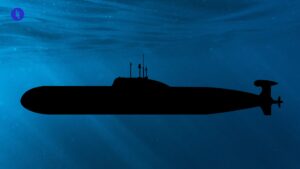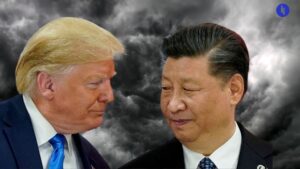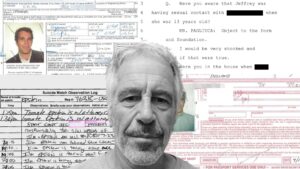Just as we smashed that ‘send’ button yesterday, London announced a new deal to cede sovereignty of the remote Chagos Islands to Mauritius after 13 rounds of negotiations.
Some backstory: the Chagos Archipelago is a group of around 60 islands in the middle of the Indian Ocean, some 500km (310mi) south of the Maldives.
The Brits constituted the archipelago as the British Indian Ocean Territory back in 1965, separating it from the UK’s Mauritius colony, which gained independence three years later. They then deported the small Chagossian population to Mauritius and elsewhere.
Stay on top of your world from inside your inbox.
Subscribe for free today and receive way much more insights.
Trusted by 134,000+ subscribers
No spam. No noise. Unsubscribe any time.
Why? To make way for a joint UK-US military base on one of the bigger islands, Diego Garcia, as a strategic Western outpost in the Indian Ocean during the Cold War.
But this move remained an irritant with Mauritius which, in 2010, went full Erin Brockovich and took the UK to the International Court of Justice (ICJ). The ICJ then handed down its opinion in 2019, agreeing with Mauritius that the UK should cede control of the islands “as rapidly as possible”.
Of course, we then fell down a rabbit hole looking at the many US bases across the Indo-Pacific, and now present to you this fine Friday four of the most intriguing examples:
- Diego Garcia – 🇬🇧→🇲🇺 Chagos Islands
One issue that stalled London’s decision was the fear that ceding sovereignty might benefit China, which has close ties with Mauritius. So the deal includes an initial 99-year lease with Mauritius for the UK and the US to retain their joint base on Diego Garcia. Joe Biden has applauded the deal, though it’s still triggered a debate within the UK:
- Some argue China could now establish bases on nearby islands, while others note Diego Garcia is really the only one that’s base-friendly (eg, with a natural harbour)
- Some argue this move erodes UK influence, while others say it expands it by blunting a common attack (‘you’re a UN Security Council member ignoring the ICJ’), and
- Some say this is a win for China, while others argue Mauritius only got closer to China in the first place because of slow progress in securing the Chagos. And so on.
Who knows how our world will look when this initial lease concludes in 99 years, though Hong Kong has shown us how these deals can sometimes dismay future generations.
Anyway, as for the Diego Garcia base itself? It’s as secretive as they get, but its deep water piers, long runways, and multiple radomes all imply various civilian (NASA), military, and intelligence activities for the 2,400 personnel stationed there (mostly Americans).
In practice, it’s also a classic ‘unsinkable aircraft carrier’, enabling (for example) airstrikes in Afghanistan and Iraq post 9/11. There are also rumours Diego Garcia was a CIA black site.
- Pine Gap – 🇦🇺 Australia
In the middle of the outback, the Joint Defence Facility Pine Gap is apparently operated jointly by intelligence agencies like the Australian Signals Directorate, the CIA, the NSA, and the US National Reconnaissance Office. It hosts ~40 radomes and reportedly provides the Five Eyes intel pact (Australia, Canada, New Zealand, UK and US) with geolocation intelligence.
Leaks suggest it’s become more military-focused over time, including to assist with unmanned drone targeting. Oh, and its remote outback location is no coincidence: it’s on prime real estate to communicate with satellites covering a third of the world, while still maintaining distance from rival spy ships hoping to intercept its signals.
- Wake Island Airfield – 🌊 Micronesia region
Wake Island Airfield is owned and operated by the US Air Force, though it was first established by Panam Airways in the 1930s as a scheduled stop on transpacific flights.
After a WWII stint of Japanese occupation, the airfield resumed its dual military-commercial operations until 1974, when the US military took exclusive control. It’s now a Navy resupply stop and hosts several US missile programs.
Wake Island is also contested ground: the Republic of the Marshall Islands (~1000km / 620mi away) claims sovereignty, but the territory is under de facto US control.
- Camp Humphreys – 🇰🇷 South Korea
Army Garrison Humphries is the largest overseas US base, hosting a population of ~40,000 people. To feed that many folks, it has three Subways, two Taco Bells, two Starbucks, two Pizza Huts, two Smoothie Kings, a Freshens, a Popeye’s, an Anthony’s Pizza, an Auntie Anne’s, a Dunkin’s, a Charley’s, a Burger King, a Manchu Wok, an Arby’s, a Baskin-Robbins, a Hunt Brothers Pizza, a Paulie’s Pizza, and if you need to balance that out with a juice cleanse, there’s also a Bun-D Natural Food.
Initially built by occupying Japanese forces, it’s located 65km (40mi) south of Seoul and around 90km (60 mi) from the famous demilitarised zone that separates South and North Korea (still technically at war).
Oh, and there’s an advanced Terminal High-Altitude Area Defense (THAAD) system nearby, which you might recall has irritated China (which once responded with economic coercion) as well as local melon farmers (who fear Thaad makes their region a target).
INTRIGUE’S TAKE
Overseas military bases will always be a hot topic with divisions along familiar lines:
- Some fear bases erode sovereignty, while others feel having a superpower in the guest room deters regional bullies
- Some fear hosting a foreign base will make it more likely your country gets pulled into a conflict, while others say strong allies make a conflict less likely
- And some welcome the economic opportunities from having a buzzing base across the street, while others tire of the inevitable bad apples causing trouble
But as the Indo-Pacific heats up, the region’s democracies seem to have made their calculations, whether in Canberra, Manila, Tokyo, Seoul, or elsewhere: whatever the costs, these bases still seem worth the security dividends right now.
Also worth noting:
- The UK-Mauritius agreement is “subject to the finalisation of a treaty and supporting legal instruments”.
- Chagossians (descendants of those arriving from the late 1700s, including as French slaves) have criticised the UK-Mauritius announcement for not adequately consulting them.
- You might’ve noticed Intrigue’s website ends in “.io”, which is actually the internet domain nominally assigned to the British Indian Ocean Territory. Nope, we don’t live on Diego Garcia – it’s just a common domain for start-ups.






